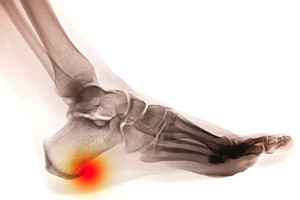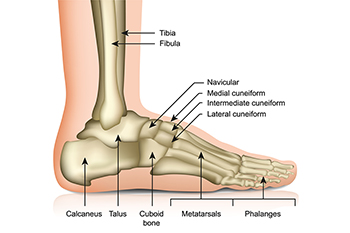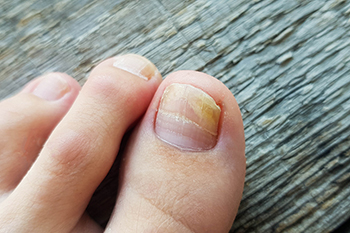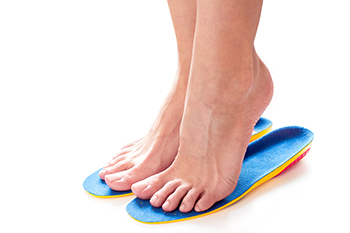Items filtered by date: November 2022
Simple Foot Care Techniques for Diabetic Patients

Diabetes is a serious medical condition that happens due to elevated glucose levels in the blood. The feet are often affected, and daily attention must be paid to them. This can begin with washing and drying the feet, followed by checking the soles for existing cuts, bruises, or scrapes. Secondly, the toenails must be trimmed correctly, and many people prefer to schedule regular visits to a podiatrist who can cut toenails properly. It is beneficial to wear shoes that fit correctly, and slippers worn inside the house can help to protect the feet while walking. Additionally, wearing sneakers while at the beach can help to shield the skin on the feet from the sand and sun. Poor circulation may be improved when the feet are frequently elevated, and a gentle exercise program is implemented. Many diabetic patients have high glucose levels as a result of the types of foods that are consumed. It is beneficial to reduce the intake of sugary foods and drinks and limit bread and pasta as much as possible. If you have diabetes, it is strongly advised that you are under the care of a podiatrist who can treat and help you to manage this condition.
Diabetic foot care is important in preventing foot ailments such as ulcers. If you are suffering from diabetes or have any other concerns about your feet, contact Philip C. Caswell, DPM from Family Foot & Ankle Care. Our doctor can provide the care you need to keep you pain-free and on your feet.
Diabetic Foot Care
Diabetes affects millions of people every year. The condition can damage blood vessels in many parts of the body, especially the feet. Because of this, taking care of your feet is essential if you have diabetes, and having a podiatrist help monitor your foot health is highly recommended.
The Importance of Caring for Your Feet
- Routinely inspect your feet for bruises or sores.
- Wear socks that fit your feet comfortably.
- Wear comfortable shoes that provide adequate support.
Patients with diabetes should have their doctor monitor their blood levels, as blood sugar levels play such a huge role in diabetic care. Monitoring these levels on a regular basis is highly advised.
It is always best to inform your healthcare professional of any concerns you may have regarding your feet, especially for diabetic patients. Early treatment and routine foot examinations are keys to maintaining proper health, especially because severe complications can arise if proper treatment is not applied.
If you have any questions, please feel free to contact our office located in Sparta, NJ . We offer the newest diagnostic and treatment technologies for all your foot care needs.
A Small Bony Growth May Indicate a Heel Spur

Stress and tension on the heels may result in a heel spur forming. It is defined as a small bony growth that forms on the bottom of the heel and is the body's natural defense against heel damage. The pain from a heel spur can be uncomfortable and can travel to the bottom of the foot where the plantar fascia lies. This is the band of tissue that connects the heel to the toes, and plantar fasciitis may gradually develop if inflammation occurs. A heel spur may be misdiagnosed as plantar fasciitis because it affects the heel. A proper evaluation is needed to differentiate between the two conditions, and this consists of having an X-ray taken. The heel spur is often noticeable in the X-ray and is done so the proper treatment can begin. Heel spurs can develop for various reasons, including wearing shoes that do not fit correctly, being overweight, or if the muscles in the back of the leg are tight. Mild relief may be found when comfortable shoes are worn, in addition to performing specific stretches that can ease heel pain. If you have a heel spur, please confer with a podiatrist as quickly as possible who can determine what the best treatment is for you.
Heel spurs can be incredibly painful and sometimes may make you unable to participate in physical activities. To get medical care for your heel spurs, contact Philip C. Caswell, DPM from Family Foot & Ankle Care. Our doctor will do everything possible to treat your condition.
Heels Spurs
Heel spurs are formed by calcium deposits on the back of the foot where the heel is. This can also be caused by small fragments of bone breaking off one section of the foot, attaching onto the back of the foot. Heel spurs can also be bone growth on the back of the foot and may grow in the direction of the arch of the foot.
Older individuals usually suffer from heel spurs and pain sometimes intensifies with age. One of the main condition's spurs are related to is plantar fasciitis.
Pain
The pain associated with spurs is often because of weight placed on the feet. When someone is walking, their entire weight is concentrated on the feet. Bone spurs then have the tendency to affect other bones and tissues around the foot. As the pain continues, the feet will become tender and sensitive over time.
Treatments
There are many ways to treat heel spurs. If one is suffering from heel spurs in conjunction with pain, there are several methods for healing. Medication, surgery, and herbal care are some options.
If you have any questions, please feel free to contact our office located in Sparta, NJ . We offer the newest diagnostic and treatment technologies for all your foot care needs.
Keep Your Feet Healthy So You Can Stay Active
Causes of a Stress Fracture

A stress fracture of the foot develops gradually, and the most common reason is from overuse. Each foot has 26 bones, and they endure the body’s weight. People who frequently run or participate in jumping activities may be prone to developing a stress fracture. It is considered to be a hairline fracture, and occurs at a weak point in the foot structure. Additional reasons why people may get stress fractures can consist of increasing speed and distance too quickly, or possibly from running on uneven surfaces. It is important to practice stretching techniques before running, and cooling down properly is essential. An X-ray is often taken which can provide a proper diagnosis. This is helpful in determining the severity of the fracture and is followed by treatment. Many patients use crutches to keep the weight off of the affected foot, which may help to accelerate the healing process. This can take up to eight weeks. If you are active in a particular sport and feel you may have a stress fracture, it is suggested that you schedule an appointment with a podiatrist who can effectively treat this condition.
Activities where too much pressure is put on the feet can cause stress fractures. To learn more, contact Philip C. Caswell, DPM from Family Foot & Ankle Care. Our doctor can provide the care you need to keep your pain free and on your feet.
Dealing with Stress Fractures of the Foot and Ankle
Stress fractures occur in the foot and ankle when muscles in these areas weaken from too much or too little use. The feet and ankles then lose support when walking or running from the impact of the ground. Since there is no protection, the bones receive the full impact of each step. Stress on the feet can cause cracks to form in the bones, thus creating stress fractures.
What Are Stress Fractures?
Stress fractures occur frequently in individuals whose daily activities cause great impact on the feet and ankles. Stress factors are most common among:
- Runners
- People affected with Osteoporosis
- Tennis or basketball players
- Gymnasts
- High impact workouts
Symptoms
Pain from the fractures occur in the area of the fractures and can be constant or intermittent. It will often cause sharp or dull pain with swelling and tenderness. Engaging in any kind of activity which involves high impact will aggravate pain.
If you have any questions please contact our office located in Sparta, NJ . We offer the newest diagnostic and treatment technologies for all your foot and ankle needs.
The Risk of Getting Toenail Fungus

Anyone is at risk for developing toenail fungus. It is a common infection that attacks the nail bed on the toes. Research has shown that the chances of incurring this may increase as the aging process occurs. Additionally, there may be existing medical conditions that can lead to getting this type of infection. These include poor circulation, psoriasis, or a weakened immune system. The fungus that causes this lives and thrives in warm and moist environments, including public swimming pools, locker rooms, and shower room floors. Because it can enter the body through small cuts in the feet, it is suggested to wear appropriate shoes while in these types of areas. Toenail fungus is contagious, and it is wise to refrain from sharing shoes, socks, and towels which may help to stop its spread. The symptoms are generally noticeable, as the toenails become yellow and brittle. Additionally, the skin may itch. Medical attention is often sought that can help to restore the nails to normalcy. As soon as you see the symptoms of a toenail fungus infection, it is strongly advised that you see a podiatrist who can guide you toward the correct treatment options.
For more information about treatment, contact Philip C. Caswell, DPM of Family Foot & Ankle Care. Our doctor can provide the care you need to keep you pain-free and on your feet.
Toenail Fungus Treatment
Toenail fungus is a condition that affects many people and can be especially hard to get rid of. Fortunately, there are several methods to go about treating and avoiding it.
Antifungals & Deterrence
Oral antifungal medicine has been shown to be effective in many cases. It is important to consult with a podiatrist to determine the proper regiment for you, or potentially explore other options.
Applying foot powder on the feet and shoes helps keep the feet free of moisture and sweat.
Sandals or open toed shoes – Wearing these will allow air movement and help keep feet dry. They also expose your feet to light, which fungus cannot tolerate. Socks with moisture wicking material also help as well.
If you have any questions please contact our office located in Sparta, NJ . We offer the newest diagnostic and treatment technologies for all your foot and ankle needs.
Foot Conditions May Be Helped by Wearing Orthotics

Many people understand that having foot pain is not normal and will often look to wearing custom-made orthotics to find relief. Orthotics are described as inserts that are worn inside the shoe that may help to correct an abnormal walking pattern. Orthotics can enable the angles of the feet to normalize as well as help make daily activities easier to complete. Additionally, they can help the patient's feet to absorb shock which may reduce pressure on existing sore spots. Orthotics are known to help correct imbalances in the feet that can affect the entire body. Some of the ways a patient may notice they qualify for orthotics include one shoe wearing out faster than the other shoe, experiencing chronic heel pain, the feet excessively pointing in or out, and the toes are not straight. If you have foot conditions that need to be corrected, please consult with a podiatrist who can determine if wearing orthotics are right for you.
If you are having discomfort in your feet and would like to try orthotics, contact Philip C. Caswell, DPM from Family Foot & Ankle Care. Our doctor can provide the care you need to keep you pain-free and on your feet.
What Are Orthotics?
Orthotics are inserts you can place into your shoes to help with a variety of foot problems such as flat feet or foot pain. Orthotics provide relief and comfort for minor foot and heel pain but can’t correct serious biomechanical problems in your feet.
Over-the-Counter Inserts
Orthotics come in a wide variety of over-the-counter inserts that are used to treat foot pain, heel pain, and minor problems. For example, arch supports can be inserted into your shoes to help correct overarched or flat feet, while gel insoles are often used because they provide comfort and relief from foot and heel pain by alleviating pressure.
Prescription Orthotics
If over-the-counter inserts don’t work for you or if you have a more severe foot concern, it is possible to have your podiatrist prescribe custom orthotics. These high-quality inserts are designed to treat problems such as abnormal motion, plantar fasciitis, and severe forms of heel pain. They can even be used to help patients suffering from diabetes by treating foot ulcers and painful calluses and are usually molded to your feet individually, which allows them to provide full support and comfort.
If you are experiencing minor to severe foot or heel pain, it’s recommended to speak with your podiatrist about the possibilities of using orthotics. A podiatrist can determine which type of orthotic is right for you and allow you to take the first steps towards being pain-free.
If you have any questions, please feel free to contact our office located in Sparta, NJ . We offer the newest diagnostic and treatment technologies for all your foot care needs.

